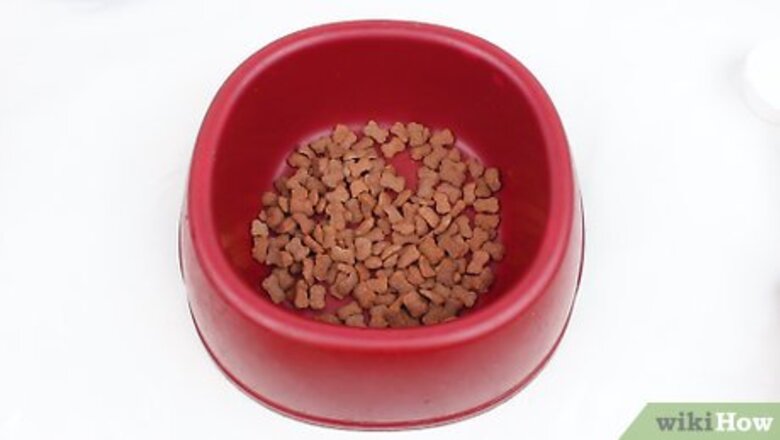
views
Adding Liquids to Make Dry Dog Food More Appealing
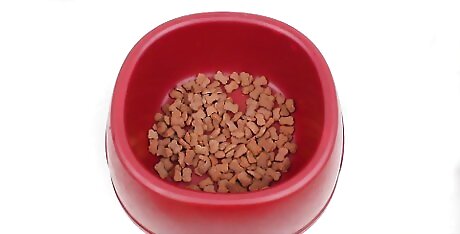
Mix wet and dry food to transition your dog to a dry diet. If you’re planning on changing your dog’s diet from wet food to primarily dry food, they will adapt faster if you mix the 2 kinds together rather than abruptly switching to only dry food. Check with your vet first to make sure your dog is ready, and then for the first week, mix 1/2 wet food with 1/2 dry food. For the second week, mix 1/4 wet food with 3/4 dry food. On the third week, offer your dog just dry food. The gradual change from dry to wet will be less noticeable to your dog. The dry food will also help to dislodge any wet food bits that get stuck in their teeth.
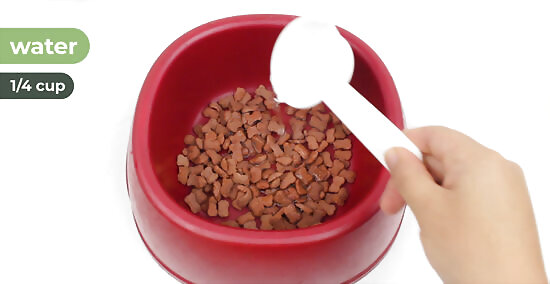
Add warm water to make dry food softer. Some dogs just don’t like the texture of dry food, or perhaps they have sensitive teeth and can’t bite down on the food without pain. Mix ⁄4 cup (59 mL) of warm water for every 1 cup (240 mL) of dry kibble to make it more palatable. You can either serve it right away as a kind of kibble soup, or you can let the water fully absorb into the dry food so it makes a kind of mash. It will take 3-5 minutes for the water to absorb fully, depending on the size of the kibble. Don’t leave softened food out for more than a few hours as it can spoil, just like wet food.
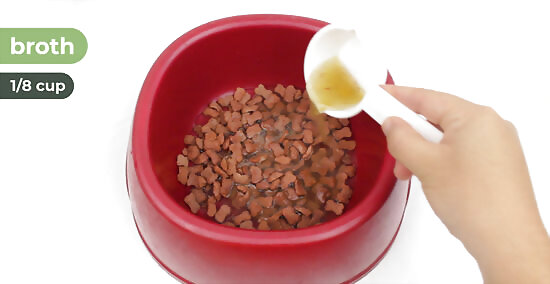
Pour a low-sodium broth over dry food to add more flavor. You can make a simple broth from chicken or beef or buy stock cubes to add to hot water. Make sure to buy low-sodium stock cubes! The fragrance from the stock will help make that dry food a little more appetizing to your dog. Don’t drown the food in gravy; rather, just add a large spoonful (about ⁄8 cup (30 mL)) over top of the dish. To make a simple broth yourself, put 1 whole cooked chicken, 2 chopped carrots, and 2 chopped potatoes into a pot and cover the ingredients with water. Cook on high until the water boils, then reduce to a simmer and let the broth cook for 2 hours. After that, remove it from the heat, let it cool, and remove the chicken and vegetables. You can store the broth in a glass container in the fridge for up to 2 weeks. After you have made the broth, you can save the leftovers in the fridge to use every day when you feed your dog. You can use warm or cold broth on the food, though warm broth will smell more aromatic. Too much salt in a dog’s diet will strain their kidneys.
Adding Solid Mix-Ins and Seasonings to Dry Food
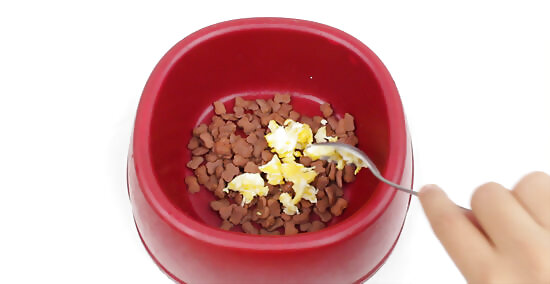
Add eggs to your dog’s food. Scrambled, hard-boiled, or over easy, eggs are a quick and easy way to add some more variety to your dog’s dry kibble (and they are good for your dog’s skin and coat). Eggs are high in protein and contain essential amino and fatty acids, and they can help settle upset stomachs. Don’t cook the eggs with any added salt or butter—plain is just fine for your canine friend! If you are adding a hard-boiled egg to your dog’s food, make sure to remove the eggshell first. An egg has around 70 calories, which is enough for a medium to large-sized dog. For a small dog, give them 1/2 an egg.
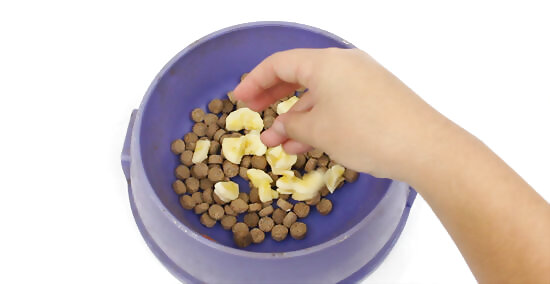
Mix chopped veggies or fruit into dry kibble. Carrots, green beans, apples, blueberries, or bananas are tasty options. Keep in mind that the bulk of your dog’s meal should be kibble. Aim to have your dog’s dish consist of 3/4 kibble and 1/4 add-ins. Cut any fruits or vegetables into bite-sized pieces and mix thoroughly with the kibble (don’t just sprinkle on top). Sweet potatoes are also great to give your dog, but they need to be washed, peeled, cooked, and unseasoned before you add them to dog food. In addition to tasting good, the different textures of the fruits or vegetables along with the kibble will make the food more interesting to your dog. Always check first to make sure a fruit or veggie isn’t toxic to your dog. You can look this information up online, or call your veterinarian.
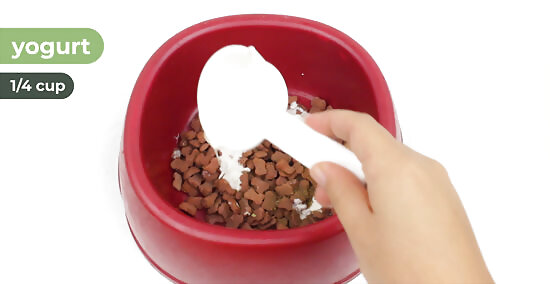
Combine dry dog food and plain yogurt for a healthy gut. Choose non-fat, no sugar added yogurt and put a small dollop in with your dog’s kibble. Mix it up to coat the dog food to ensure your pup doesn’t just eat the yogurt off the top, avoiding the dry food underneath. For a small dog, using ⁄4 cup (59 mL) of yogurt should be fine, while for bigger dogs use ⁄2 cup (120 mL) of yogurt. Probiotics in yogurt will act differently in a canine gut. If you want to give your dog probiotics, give them ones meant for canines. If your dog can’t digest milk or has diarrhea after having milk, yogurt will cause a similar effect
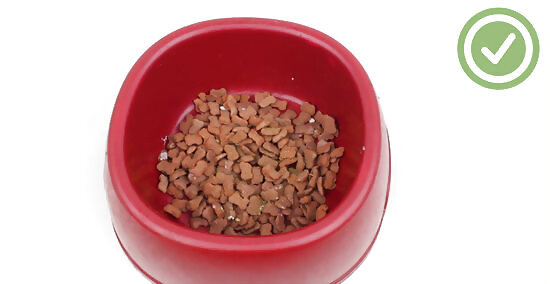
Sprinkle herbs over dry food. Dogs have taste buds, and a lot of the herbs we use every day have healthy qualities that are good for dogs! For example, oregano contains antioxidants, rosemary has iron and fiber, and peppermint helps digestion. If using fresh herbs, rinse them and mince the leaves before adding to food. You can use dried herbs, but they won’t be as aromatic as fresh ones and may have fewer health benefits. Add ⁄2 US tbsp (7.4 mL) of total seasonings to the kibble. Don’t use the following herbs in your dog’s diet: pennyroyal, tea tree oil, comfrey, white willow bark, ma huang (ephedra), wormwood, yucca, and garlic.



















Comments
0 comment